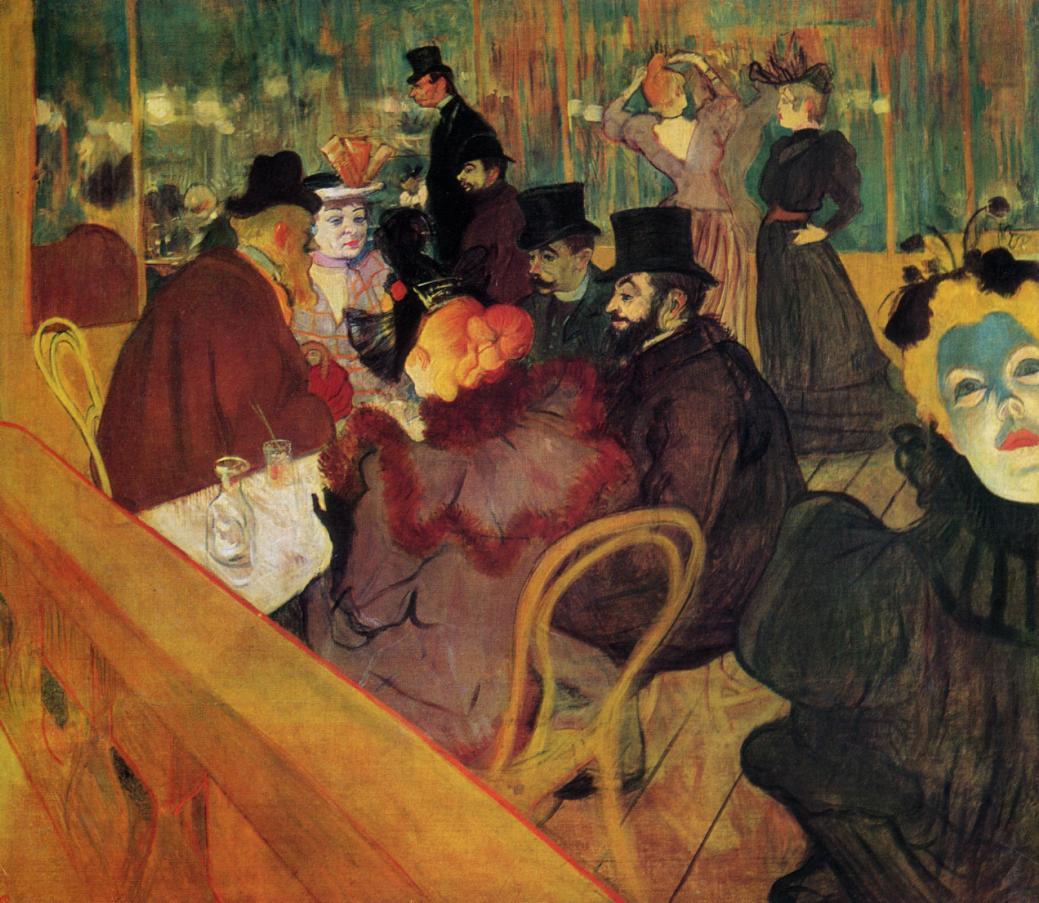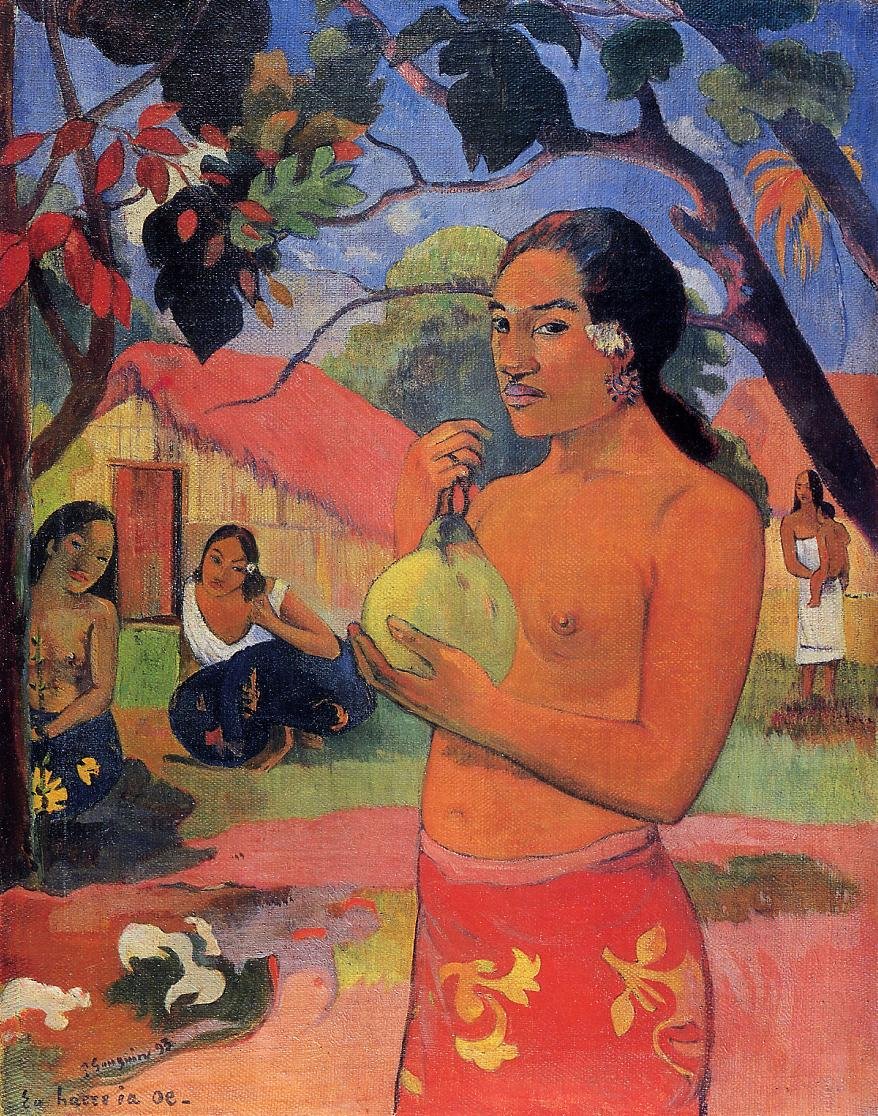
The Style Is Best Known For
- Fruit by Paul Cezanne
- Sunflowers by Vincent van Gogh
- Island life by Paul Gauguin
Who, When, and What?
The Post-Impressionist movement started in Paris around 1880. Almost all the key players were French or lived in France, though the ideas spread throughout Europe and eventually into North America. Post-Impressionism can be seen in painting and other two-dimensional art forms like drawings and prints. By the early-20th century, it had been superseded by more avant-garde styles (such as Cubism) that grew out of Post Impressionism.
How to Recognize It
- Bright colors.
- Simple, clean shapes – sometimes outlined.
- Flatness suggesting two dimensionality.
- Common subjects like landscapes and still lives.
- Not a lot of detail.
- You might think at first glance that a child drew it.

Background
Once the Impressionists started to challenge long-held beliefs about art, the changes kept coming. Nothing was taken for granted anymore. Artists who became known as Post Impressionists were often a generation or so younger than the Impressionists and may have experimented with Impressionism before progressing to more radical ideas. All of them tried something a little different, so there’s no true Post-Impressionist “style”.
Underlying Ideas
- Formalism, an art theory being worked out at this time, says that forms are important for their visual qualities, not what they represent.
- The purpose of an artwork isn’t to tell a story or record an event. It’s to have a visual experience.
- The natural appearance of things shouldn’t be the most important thing to an artist.
- Form is more important than detail.
- Color is useful for evoking emotion, and it shouldn’t be limited to the subject’s colors in the real world).
- Three dimensionality and perspective aren’t critical to art and should be used with discretion.
Learn to think like an art historian.

Key Artists
- Paul Cezanne
- Paul Gauguin
- Vincent van Gogh
- Henri Matisse
- Paul Signac

Some Related Artists
- Edouard Manet (famous for Olympia) broke a lot of rules about subject matter and technique. His experiments played a big role in inspiring both Impressionism and Post-Impressionism, but he didn’t associate with either one.
- Henri de Toulouse-Lautrec (famous for can-can dancers at the Moulin Rouge) used many Post Impressionist ideas about form, color, and perspective in his artwork, but he maintained a strong connection with the representational art. His works resemble a cross between Renoir and Matisse.
- Georges Seurat (famous for A Saturday Afternoon on the Island of La Grande Jatte) invented his own sub-movement of Post-Impressionism. Neo-Impressionism (also called Pointillism) involved painting tons and tons of tiny dots of different colors that your eyes were supposed to blend together to create vibrant colors. They look pixilated to today’s viewer.

Don’t Confuse It With
Impressionism: As its name suggests, Post Impressionism came after Impressionism. The Impressionists were deeply interested in the natural appearances of things, but they disagreed with the establishment about the best way to show them. Post Impressionists had no such affinities. They cared much more about capturing feelings than they did about faithfully portraying the world around them.
Fauvism and Cubism: Just like the Post-Impressionists built on Impressionist innovations, Post Impressionism also inspired the movements that came after it. Two such styles were Fauvism, which was characterized by vibrant colors, and Cubism, which can be recognized for its sharp edges and geometric shapes.

